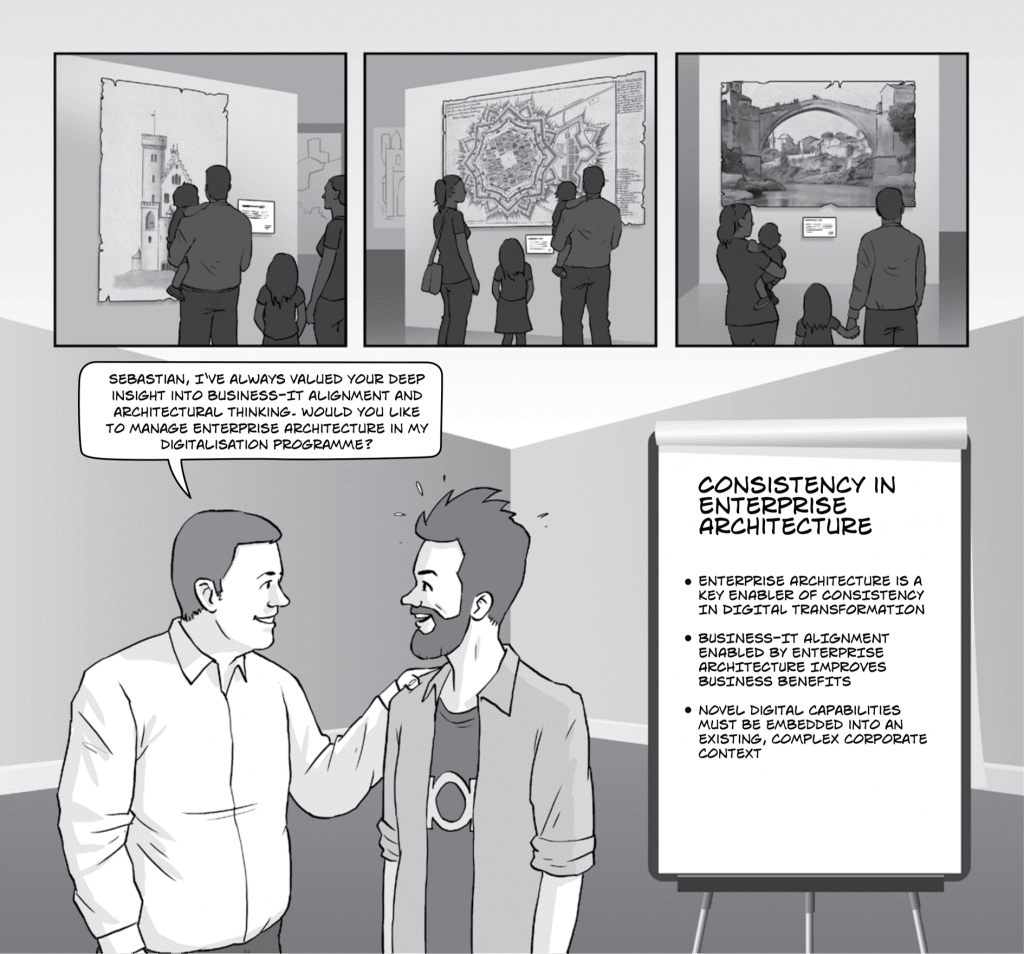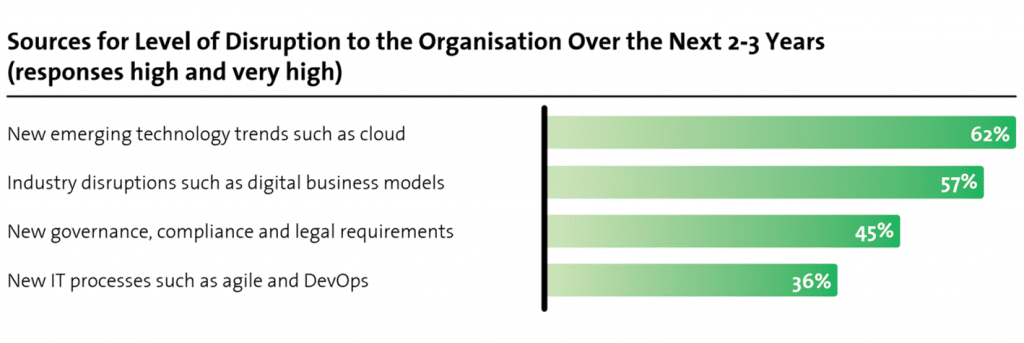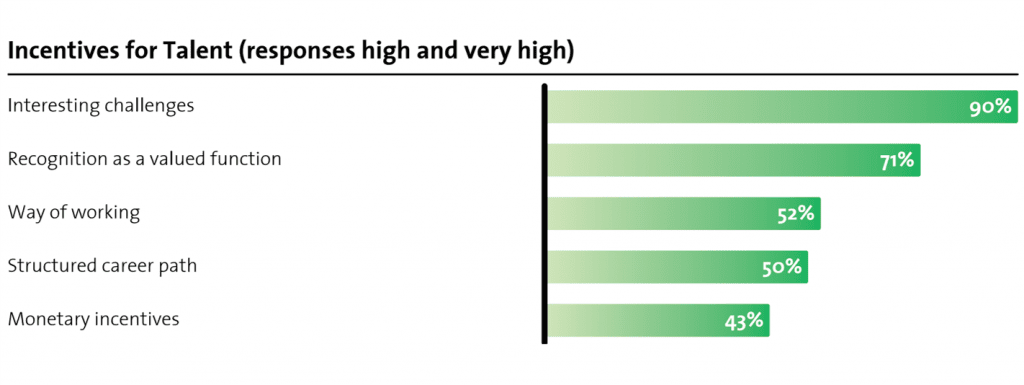The digitalisation journey entails a comprehensive business model transformation.
Alongside the formulation of the business model changes, it is crucial to investigate the modifications to enterprise architecture (EA) necessary to support the digital transformation.
EA looks at key dimensions and layers of the operating model of an enterprise, describes them and analyses their dependencies. As an analogy, the construction plans of a building depict how floor layout, wall construction, electricity circuits, plumbing and construction materials are used to design and enhance a building that matches the budgets and expectations of the owners. Similarly, EA facilitates the need to keep the various operational dimensions of an enterprise well architected and balanced. Such dimensions include: organisation, process, data, applications, platforms and skills. The disparity between the as-is and the to-be state of the enterprise in these dimensions helps determine the joint transformation initiatives across the business and its IT. Literature is available[1] to describe how EA aligns with strategy development and execution.
Enterprise architects face many challenges, as illustrated in a Forbes article, which states that
‘misdirected enterprise Architecture initiatives vastly outnumber bona fide examples of Enterprise Architecture efforts leading to measurable business value.’[2]
This is problematic since, with the advent of disruptive digital technologies, EA is critical to helping redesign business and operating models.
Digital can create value by allowing a company to create new online products, establish a multi-channel strategy, run analytics or increase process automation.
In a digital world, established companies need to up their game if they are going to survive and thrive. But incumbents face challenges that start-ups do not have; they have processes and systems ingrained over many years. A recent online EA survey with more than 100 respondents to date, run by McKinsey and Henley Business School, and targeted at CIOs, EA heads and business leaders, found that tackling complexity arising from poorly connected systems is perceived as a goal of equal importance to digital transformation, with both present in more than 60% of companies. This complexity inhibits progressive change. The core findings of the survey are highlighted below.
As seen in the figure below, digital business models are often seen as a major disruption given the opportunities that emerging technologies offer. An encouraging finding was that, in most organisations, digital transformation was high on the EA agenda.[3]
According to Gartner,[4] EA needs a bimodal capability to ensure both agile digital innovation and a stable foundation. The survey found that most companies are using agile approaches, but with different flavours.
About half the companies are using agile mainly for fast-moving applications. The remainder, fairly evenly split, are at opposite ends, mostly using agile or not using it at all.
There is support in the McKinsey-Henley EA survey for the existence of agility and stability as conflicting goals. Companies with digital high on their agenda typically have more point-to-point connections, a lower quality of business process documentation and less reuse of services. We can conclude that, in the drive for agility, there is a resulting increase in IT complexity. A related survey finding was that while digital transformation is a key objective of EA in most companies, reduction in complexity is seen to be at least as important as digitalisation.
Perhaps the biggest difficulty for enterprise architects is that fewer than 60% of respondents believed that business colleagues were aware of what EA does. On a more positive note, where EA is contributing to digital, there is greater business–IT alignment utilising EA artefacts, such as capability and process models, and this results in greater business benefits.
Gartner has termed these types of leaders as vanguard architects, in contrast to those dealing with foundation architecture.
These findings emphasise the importance of leadership in attracting and retaining top EA talent, particularly vanguard architects. Here it seems that Herzberg’s hygiene and motivating factors come into play, with enterprise architects more incentivised by interesting challenges and recognition than by money.
How do EA leaders help companies go digital? There are two main levers. The first is that they have a deep understanding of how to connect the large number of processes and systems in most organisations. If someone is not designing the equivalent of your heating, water and electrics, then it may become increasingly complex and costly. A corollary is that enterprise architects know the techniques of efficient digital transformation, for example when and how to design a central hub with services to users rather than connecting everything point-to-point.
The second lever is that top EA leaders are proactive and engaged with the CxO team in strategic planning. They help challenge and redesign the business and operating models to link with enhanced processes and systems. The survey found that top EA leaders spend more time on this activity and use EA artefacts such as capability models to expand business–IT alignment. As a result, they focus more strongly on measuring and delivering business benefits, up to twice as much as their least effective peers.
In summary, research shows that EA has a potentially huge contribution to make in the journey to a digital enterprise.
_____
[1] Ross, J. W., Weill, P., Robertson, D. C.: ‘Enterprise Architecture as Strategy’, Harvard Business Review Press, p. 6ff, 2006.
[2] Bloomberg, J.: ‘Is Enterprise Architecture Completely Broken?’, Forbes, 2014.
[3] Informatica: ‘Transform the enterprise – or be left behind’, Informatica, 2016.
[4] Golden, B.: ‘What Gartner’s Bimodal IT Model Means to Enterprise CIOs’, CIO, 2015.




